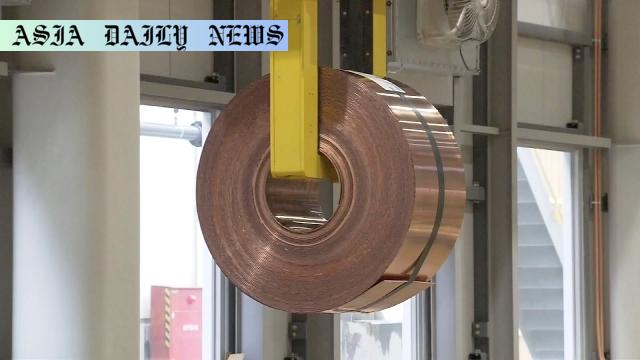Trump tariff: US President Donald Trump announces 50% tariff on copper imports to boost domestic production, citing national security.
Trump announces a 50% tariff on copper imports starting August 1.
The policy aims to secure key US industries and address national security concerns.
US copper futures spike amid anticipation of rising domestic prices.

Introduction: Trump’s Tariff Decision
In a bold economic move, US President Donald Trump announced his administration’s decision to impose a 50% tariff on copper imports starting August 1. The policy aims to enhance domestic copper production and aligns with the President’s vision of strengthening US industries deemed critical to national security. This tariff decision was unveiled through a social media post, reflecting Trump’s stance that copper plays a pivotal role in industries such as semiconductor manufacturing, aerospace, data centers, and national defense systems.
The Strategic Importance of Copper
Copper, often referred to as the “metal of the future,” holds immense importance in various industries due to its high conductivity and diverse applications. For example, the semiconductor industry, which underpins everything from smartphones to advanced military equipment, requires large quantities of copper to ensure effective manufacturing. Copper is equally vital for building ships, aircraft components, and missile defense infrastructure. Given this strategic value, Trump’s decision suggests an attempt to secure these industries against potential geopolitical disruptions or over-reliance on foreign suppliers.
Domestic Market Implications
The announcement has already caused ripple effects across the financial markets, with US copper futures surging to record highs in New York. Investors, anticipating a sharp rise in domestic prices due to decreased foreign competition, responded swiftly. Analysts project that this could benefit US mining companies and local copper producers, while industries reliant on copper may face challenges in sourcing affordable materials. Additionally, the policy could catalyze job creation in US-based mining and manufacturing sectors, aligning with Trump’s broader agenda of revitalizing American industrial employment.
Criticism and Global Trade Impacts
Despite its potential domestic benefits, the tariff decision has drawn criticism on both international and local fronts. Experts warn of increased tension with copper-exporting countries who view the move as protectionist. Furthermore, global copper-market dynamics may shift, with exporters potentially seeking alternative buyers outside the United States. Domestically, manufacturers reliant on copper might pass increased costs onto consumers, causing a rise in prices for goods that heavily use the metal. While the administration emphasizes long-term benefits, businesses reliant on imports could face short-term challenges.
Conclusion: A Controversial Yet Strategic Policy
President Trump’s decision to impose a 50% tariff on copper imports underscores a prioritization of national interests and critical industry security. While the move seeks to reinvigorate domestic production, stimulate job growth, and reduce dependence on foreign supplies, it also risks sparking trade disputes and challenges for import-reliant sectors. With the global market closely monitoring this development, the full implications of this policy will unfold over time, illustrating the balancing act between economic nationalism and globalization.
Commentary
Economic Strategy or Trade Risk?
President Trump’s decision to impose a 50% tariff on copper imports illustrates his administration’s continued focus on economic nationalism. There is no denying the strategic importance of copper in various critical industries. By prioritizing domestic production, the policy aims to reduce dependency on foreign suppliers, which could potentially enhance national security. However, this ambitious move also comes with significant trade-offs that deserve consideration.
Implications for Domestic and Global Markets
Domestically, the policy could breathe new life into American mining and manufacturing sectors, triggering job growth, innovation, and economic resilience. However, global markets may not view the move favorably. With copper-exporting nations likely to see this tariff as a barrier to trade, the US risks alienating key trading partners. Such protectionist policies can strain international economic relationships and trigger retaliatory measures.
Impact on Business and Consumers
Although the stated purpose of promoting domestic security is commendable, the potential short-term impact on businesses reliant on copper may cause disruptions. Manufacturers may face higher costs, translating to increased prices for consumers. While the administration touts long-term benefits, the immediate financial burden on industries and individuals could overshadow the potential positives, at least in the near term.
The Larger Geopolitical Picture
This tariff reflects broader trends of economic nationalism observed worldwide in recent years. It raises questions about how far governments should go to protect critical industries at the risk of compromising international cooperation. If not managed diplomatically, policies like this could exacerbate trade tensions globally, leaving economies in a precarious position.
Final Thoughts
While the copper tariff may seem like a bold and necessary step to safeguard US industries, it also emphasizes the intricate balance required between national interests and global economic diplomacy. As the policy unfolds, it will inevitably spark debates over the benefits and costs of such protectionist measures—and their long-term implications for the US and the global economy.


